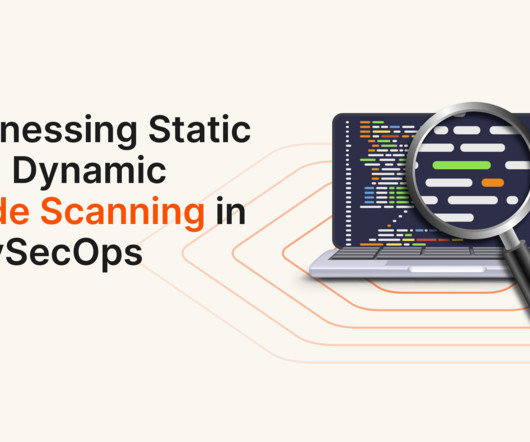Harnessing Static and Dynamic Code Scanning in DevSecOps
Pure Storage
FEBRUARY 12, 2024
Code scanning is the automated process of analyzing source code for potential security vulnerabilities, coding errors, and compliance violations. SAST analyzes source code for potential vulnerabilities without executing it. 13. CWE-287 Improper Authentication Impact: Unauthorized access. What Is Code Scanning?











Let's personalize your content